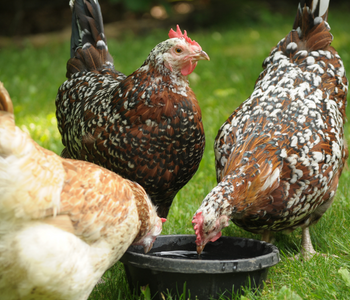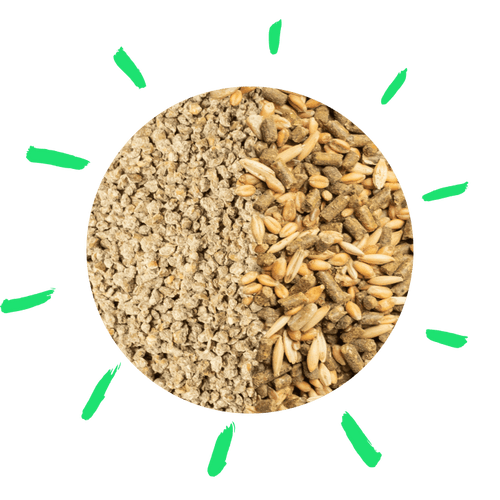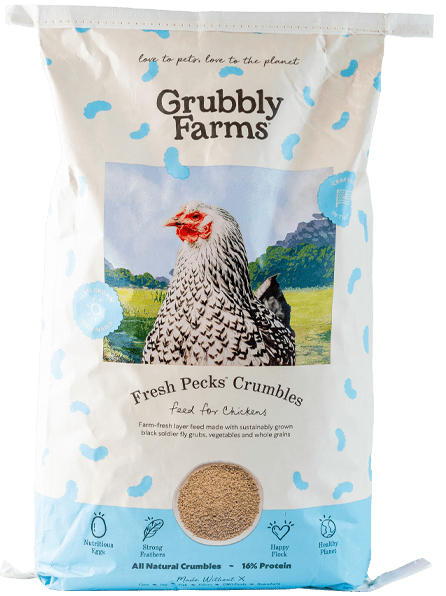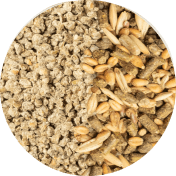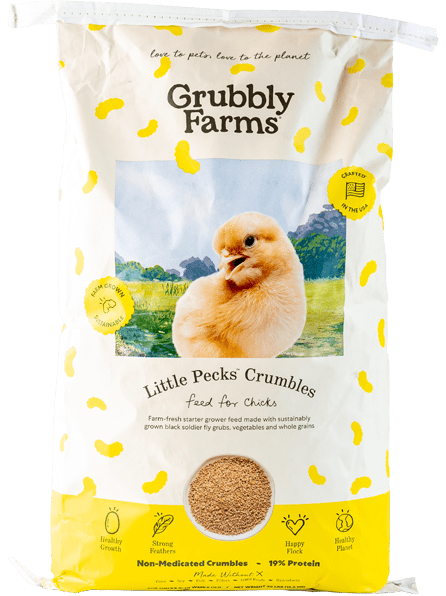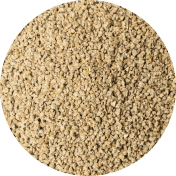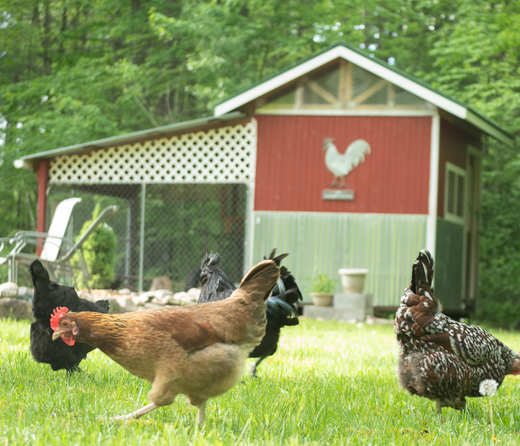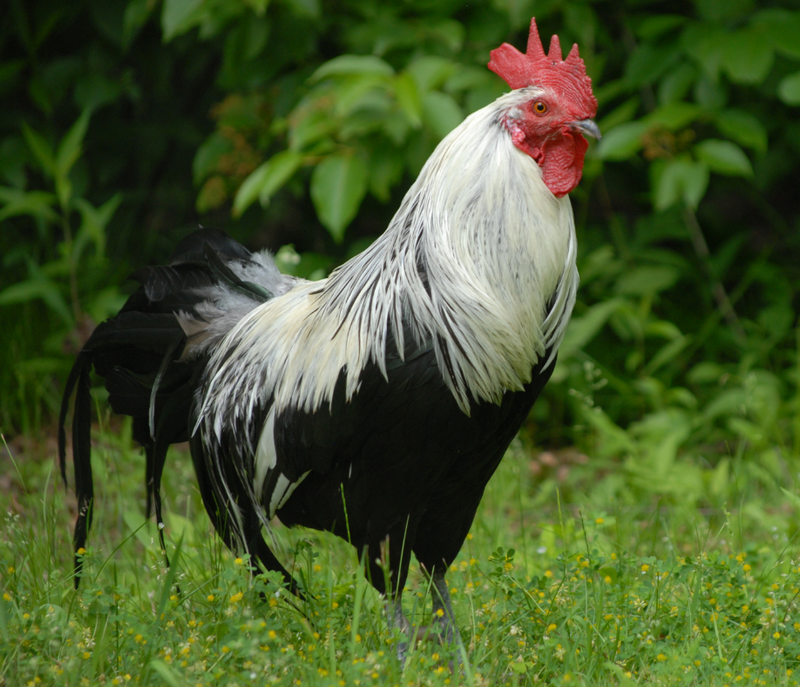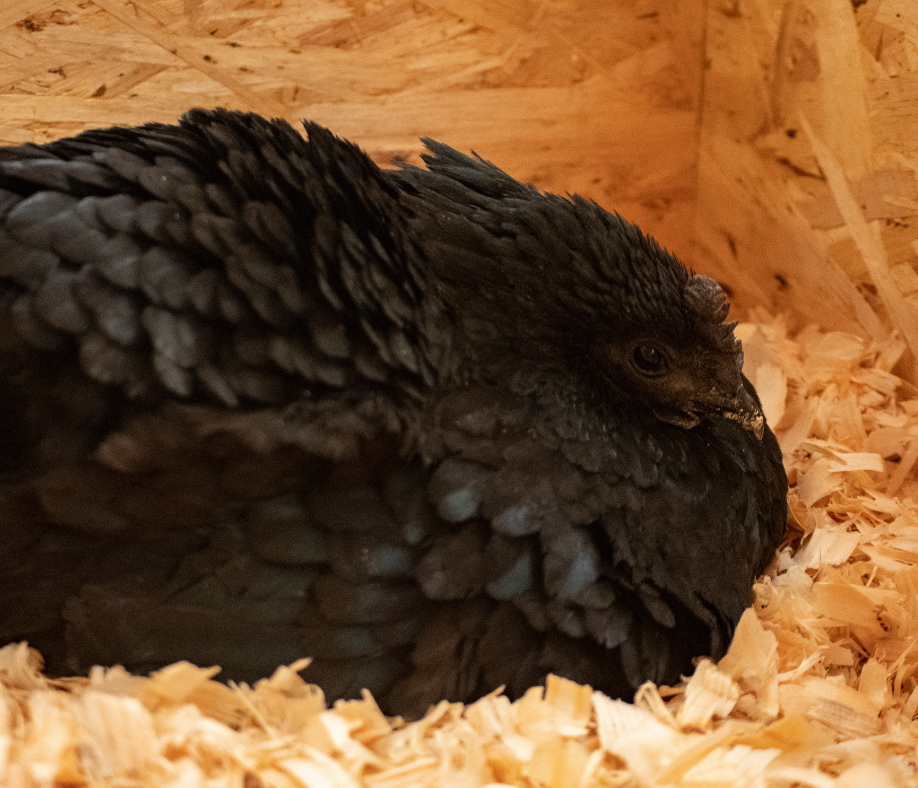With a wide range of chicken breeds available to the backyard chicken keeper, choosing just a few breeds to include in your first flock can seem daunting. Each chicken breed has its quirks and personality traits so it’s important to choose breeds that will best fit your lifestyle. The following six chicken breeds are perfect a beginner's first flock and are favorites amongst long-time chicken raisers as well!
#1. Orpington
Origin: United States
Weight: cock- 10 lbs., hen- 8 lbs.
Breed Class: English
Varieties: black, blue, buff, white
Appearance: If nothing else, the Orpingtons’ large, fluffy appearance will be enough to make you want to get some! Orpingtons are richly feathered with loose, fluffy plumage. Their feathers are broad, smooth, and thickly cover their large, robust bodies. This gives them a very plump, fluffy appearance.
Orpingtons have a single, upright comb. The comb, earlobes, and wattles are all a bright red color. Orpingtons can be both standard size (7.5-10lbs) or bantam size (3-3.5lbs).
Breed Traits: Orpingtons are considered a dual-purpose chicken breed, which means they can be raised for both egg production and for meat. As meat birds, Orpingtons are valued for their large size and fast growth rate. However, most chicken raisers value Orpingtons for their good egg production and friendly disposition. The hens are good layers, even during the winter months, and will produce about 200-250 eggs a year. Orpington eggs are large and brown in color.
Opringtons are a very cold hardy breed, however, the cock’s large comb and wattles can be prone to frostbite. Orpington hens will go broody and make great mothers! Standard size Orpingtons are a large breed and will need more coop space and lower perches.
Temperament: Orpingtons are best known for their friendly, calm, and affectionate personalities. These birds truly are the Golden Retrievers of the chicken world! Orpingtons are very docile and when handled from a young age, will even get attached to their chicken raisers. These birds are the perfect choice for families with young children or for youth who want to show off their chickens in a county fair!
Best Beginner Qualities:
- Extremely docile and friendly
- Good egg layers of large size eggs
- Cold hardy
- Get along well with other chicken breeds
- Adapt to both confinement and free-range

#2. Australorp
Origin: Australia
Weight: cock- 8.5 lbs., hen- 6.5 lbs.
Breed Class: English
Varieties: black
Appearance: Australorps have rich, black plumage that often has a green or blue sheen in the sunlight. Their bright red comb, wattles, and earlobes contrast stunningly with their black feathers. Australorps are loosely feathered, however, their feathers lay flat and close to their body giving them a sleek but fluffy appearance.
Australorps have a single, upright comb with five evenly serrated points with hens having a smaller comb than the roosters. Both sexes have smooth earlobes, well-rounded wattles, and a black beak. Australorps can be either standard size (5-7lb) or bantam size (1.7-2.2lb).
Breed Traits: Australorps are also considered a dual-purpose breed and can be used for both meat or egg production. Their pinkish white skin and large, meaty carcasses make them good for meat production. The hens are excellent layers, producing over 200 eggs a year. The eggs are light brown and large in size. Australorps are fast maturing and the hens will go broody.
Australorps are a very cold hardy breed, however, the cock’s large comb and wattles can be prone to frostbite.
Temperament: Australorps are another extremely docile breed that make great backyard pets and are perfect for youth chicken raisers. They are friendly and calm, with unique and curious personalities. The hens are known to be on the quieter side and will bond with their chicken keepers.
Best Beginner Qualities:
- Docile and calm
- Excellent egg layers of large, brown eggs
- Cold hardy
- Get along well with other chicken breeds
- Adapt well to both confinement or free-range

#3. Plymouth Rock
Origin: United States
Weight: cock- 9.5 lbs., hen- 7.5 lbs.
Breed Class: American
Varieties: barred, black, blue, buff, Columbian, partridge, silver penciled, white
Appearance: Plymouth rocks are a tight but richly feathered breed that come in many different varieties (colors). The most common variety is the barred Plymouth Rock, which features a stunning bluish/black and white feather pattern. Characteristic of the breeds in the American class, Plymouth Rocks have yellow skin, beak, shanks, and toes.
Plymouth Rocks have a single, upright comb with five points that are evenly serrated. Both sexes have elongated earlobes and well-rounded wattles. All facial features are bright red in color. Plymouth Rocks can be either standard size (6.5-7.5lb) or bantam size (2.5-3.5lb).
Breed Traits: Plymouth Rocks are a great dual-purpose breed that can be used for both meat production or egg production. At one point, Plymouth Rocks were the most common chicken breed in America because of how versatile they were. The hens can lay an amazing amount of 260-300 eggs a year! The eggs are light brown and medium to large in size. Plymouth rock hens will go broody and make great mothers. Plymouth rocks are very cold hardy yet can handle hot temperatures as well.
Temperament: Plymouth Rocks are a little bit more of an active breed, but they are still known to be docile and friendly when handled from a young age. They have strong personalities but can be calm and affectionate towards to their chicken raisers. Any chicken can be encouraged to be friendly and docile, especially when Grubblies snacks are involved!
Best Beginner Qualities:
- Docile and friendly
- Superb egg layers
- Good dual-purpose breed
- Cold hardy and moderately heat tolerant
- Adapt well to both confinement or free-range

#4. Wyandotte
Origin: United States
Weight: cock- 8.5 lbs., hen- 6.5 lbs.
Breed Class: American
Varieties: barred, birchen, black, black-breasted red, blue, blue red, brown red, buff, buff Columbian, Columbian, golden laced, lemon blue, partridge, silver laced, silver penciled, splash, white, white-laced red
Appearance: Wyandottes are heavily feathered with loose, fluffy plumage. They have a well-rounded body that gives them a fluffy, robust appearance. Their legs are fairly stout and set apart. Wyandottes have a somewhat round look to them since their tails are held at a 40° angle and heavily feathered, thus smoothing out angular curves their body might have.
Wyandottes have a rose comb that sits tightly to their head. Both sexes have oblong earlobes and well-rounded wattles. All facial features are a bright red in color and the beak is always a shade of yellow. Wyandottes can be either standard size (5.5-6.5lb) or bantam size (1.5-2lb).
Breed Traits: Wyandottes are another great dual-purpose breed that can be used for both meat production or egg production. They are fast maturing, have meaty carcasses, and have a short back which appeals to modern day consumers. The hens lay an average of 200 eggs a year. Their eggs are brown in color and medium in size. Wyandotte hens will occasionally go broody and make good mothers when they do brood.
Wyandottes are a very cold hardy breed because of their lustrous feathering and short rose comb.
Temperament: Wyandottes can have a variety of temperaments, but are considered a docile, friendly breed of chicken. When handled from a young age, Wyandottes can grow into curious and calm adults that don’t mind being picked up and handled. Their exotic coloring and calm disposition make them a popular choice for youth shows.
Best Beginner Qualities:
- Calm
- Good egg layer
- Good dual-purpose breed
- Very cold hardy
- Get along well with other chicken breeds
- Adapt well to both confinement or free-range

#5. Rhode Island Red
Origin: United States
Weight: cock- 8.5 lbs., hen- 6.5 lbs.
Breed Class: American
Varieties: single comb, rose comb
Appearance: Rhode Island Reds have a beautiful, rich dark brown plumage color with the feathers in their tail being nearly black in color. They are more smoothly feathered which gives them a sleek but soft appearance.
Rhode Island Reds can have two different types of combs, a single comb or a rose comb. The single combed variety has a straight single comb with five even points. The rose comb variety has a medium size rose comb that sits tightly to the head. The single comb variety is the most common. Both sexes have medium sized earlobes and wattles. All facial features are a bright red in color with the beak being a reddish horn color. Rhode Island Reds can be either standard size (6.5lb) or bantam size (1.8lb).
Breed Traits: Rhode Island Reds were developed to be an excellent dual-purpose breed. They are considered a utility breed that can be raised for meat production or for their superior egg laying qualities. They are fast maturing and excellent layers with a meaty frame. The hens lay around 290-310 brown eggs a year that are medium to large in size. Rhode Island Reds are excellent foragers and do well with free-ranging. These hens rarely go broody.
Rhode Island Reds are cold hardy and can handle hot temperatures.
Temperament: Rhode Island Reds are a more active breed but are intelligent and can be raised into friendly, calm adults. Most Rhode Island Reds have a docile disposition and are very curious. They are often at the top of the pecking order and may seem a little assertive with less dominant breeds when in a mixed flock. The roosters can have a more assertive temperament.
Best Beginner Qualities:
- Calm
- Superb egg layers
- Good dual-purpose breed
- Cold hardy and moderately heat tolerant
- Adapt well to both confinement or free-range

#6. Sussex
Origin: England
Weight: cock- 9 lbs., hen- 7 lbs.
Breed Class: English
Varieties: birchen, buff, dark brown, light, red, speckled, white
Appearance: Sussex are finely curved birds with smooth feathering. They are soft, robust, and elegant in appearance with their smoothly curved back that leads into a 45° angled tail and a plump round breast.
Sussex have a single, upright comb with five well defined points. Both sexes have medium sized earlobes and small, well-rounded wattles. All facial features are a bright red in color. Sussex chickens can be either standard size (7lb) or bantam size (2.5lb).
Breed Traits: Sussex are a great dual-purpose breed. They have a plump, meaty body but are also excellent producers of medium-sized, light brown eggs. The hens lay around 250-270 eggs a year. Sussex hens will go broody occasionally and make good mothers. Their calm disposition makes them get along well with a variety of other chicken breeds. Sussex are very cold hardy yet can handle hot temperatures as well.
Temperament: Sussex are similar to Orpingtons when it comes to temperament and disposition. They are calm, docile, friendly, and have a reputation of being extremely curious. While they can be a little more active than the Orpingtons, Sussex can form bonds with their chicken raisers and are a great breed for youth to raise. They are smart, curious, and bold when it comes to trying new things!
Best Beginner Qualities:
- Friendly and curious
- Good egg layers
- Cold hardy and moderately heat tolerant
- Get along well with other chicken breeds
- Adapt well to both confinement or free-range
The Perfect Fit
While many of these chicken breeds have quite a few things in common, they all have their own quirks and benefits. When choosing chicken breeds to create your first flock with, you will more than likely be attracted to friendly chicken breeds that are good egg layers. You also want a flock that will thrive in your area, meet your chicken raising expectations, and be perfect for a backyard situation. All six of these breeds fit the bill and would be a great choice for first time chicken raisers and old pros alike! They are a joy to raise and care for, and you are sure to form a special bond with whatever birds you choose.





